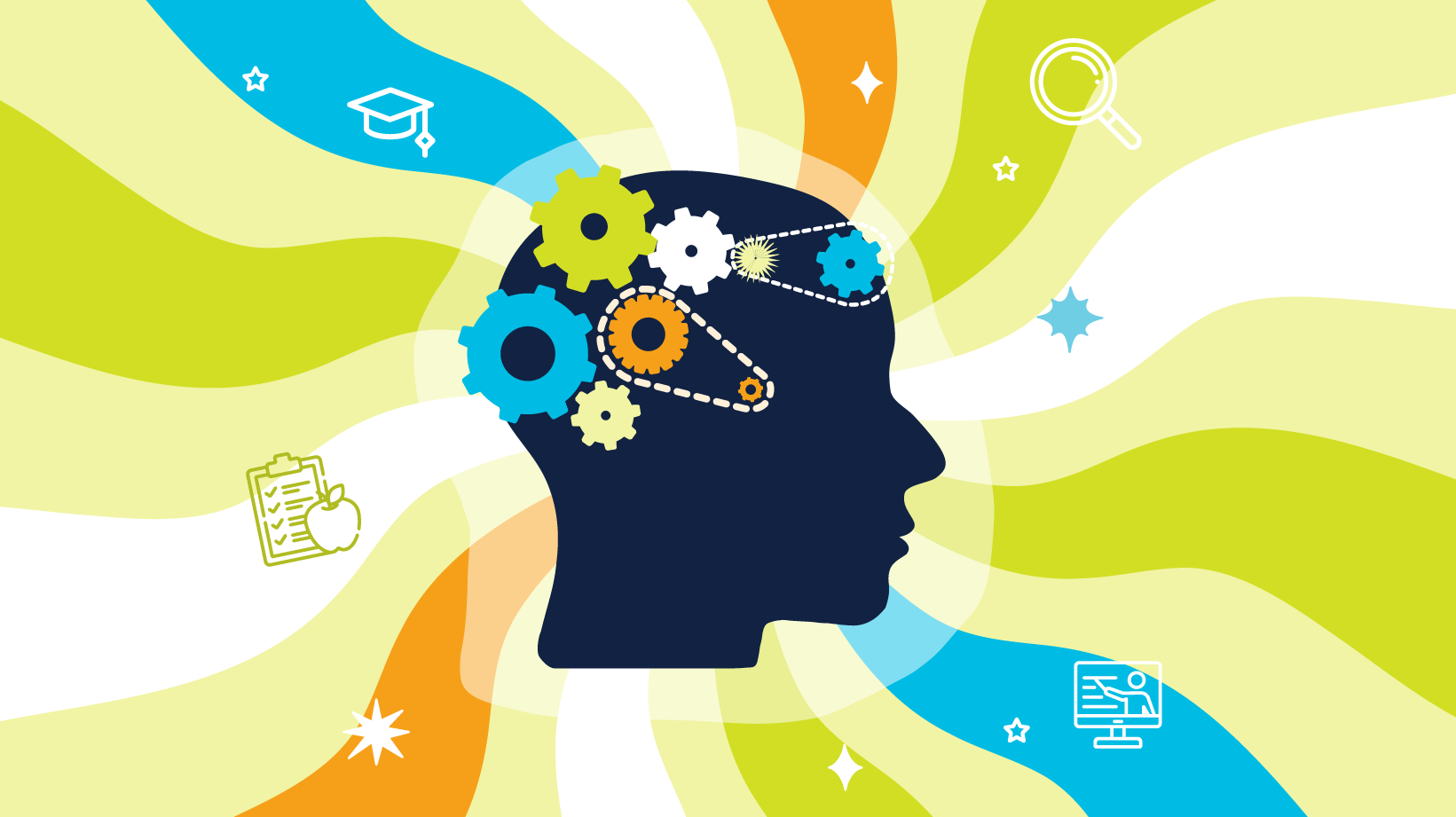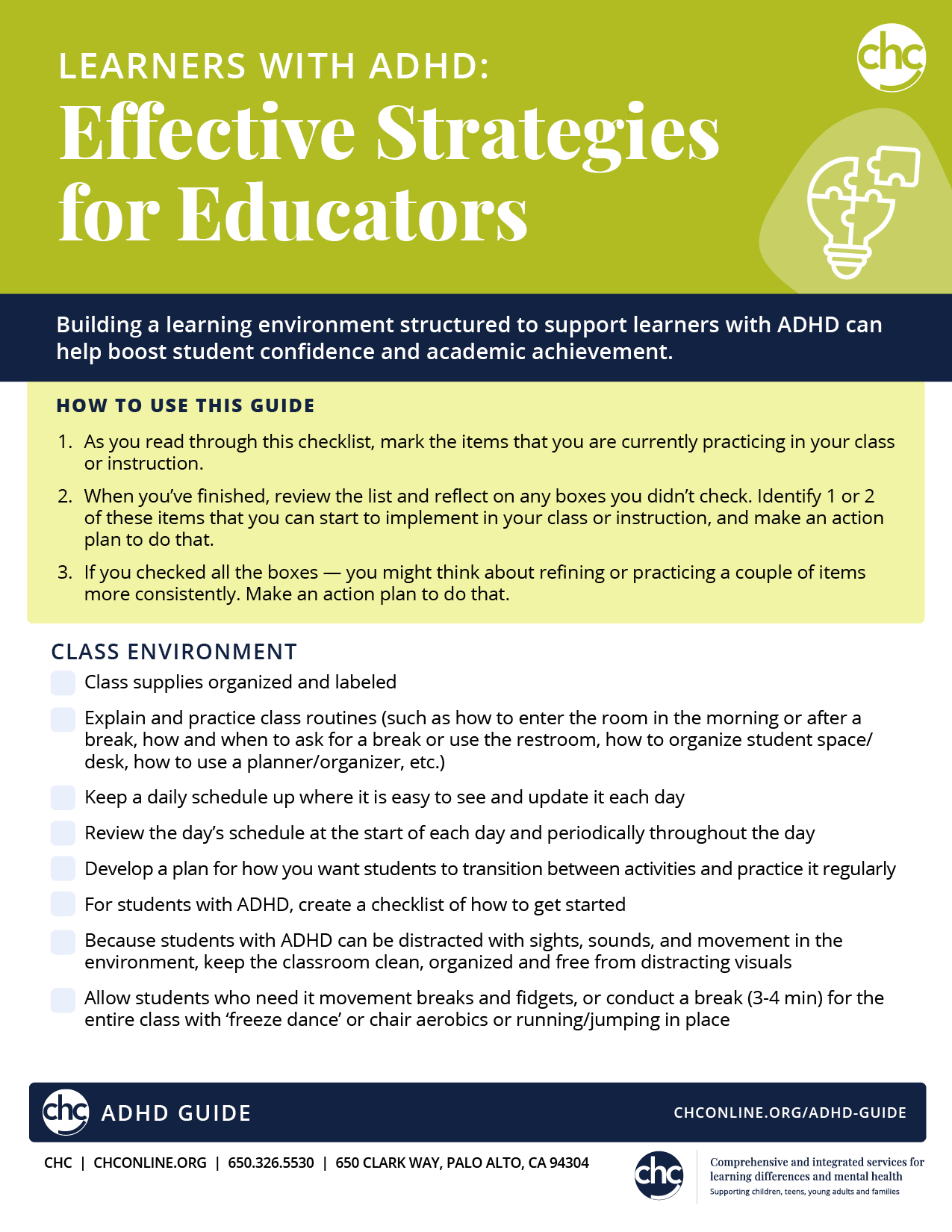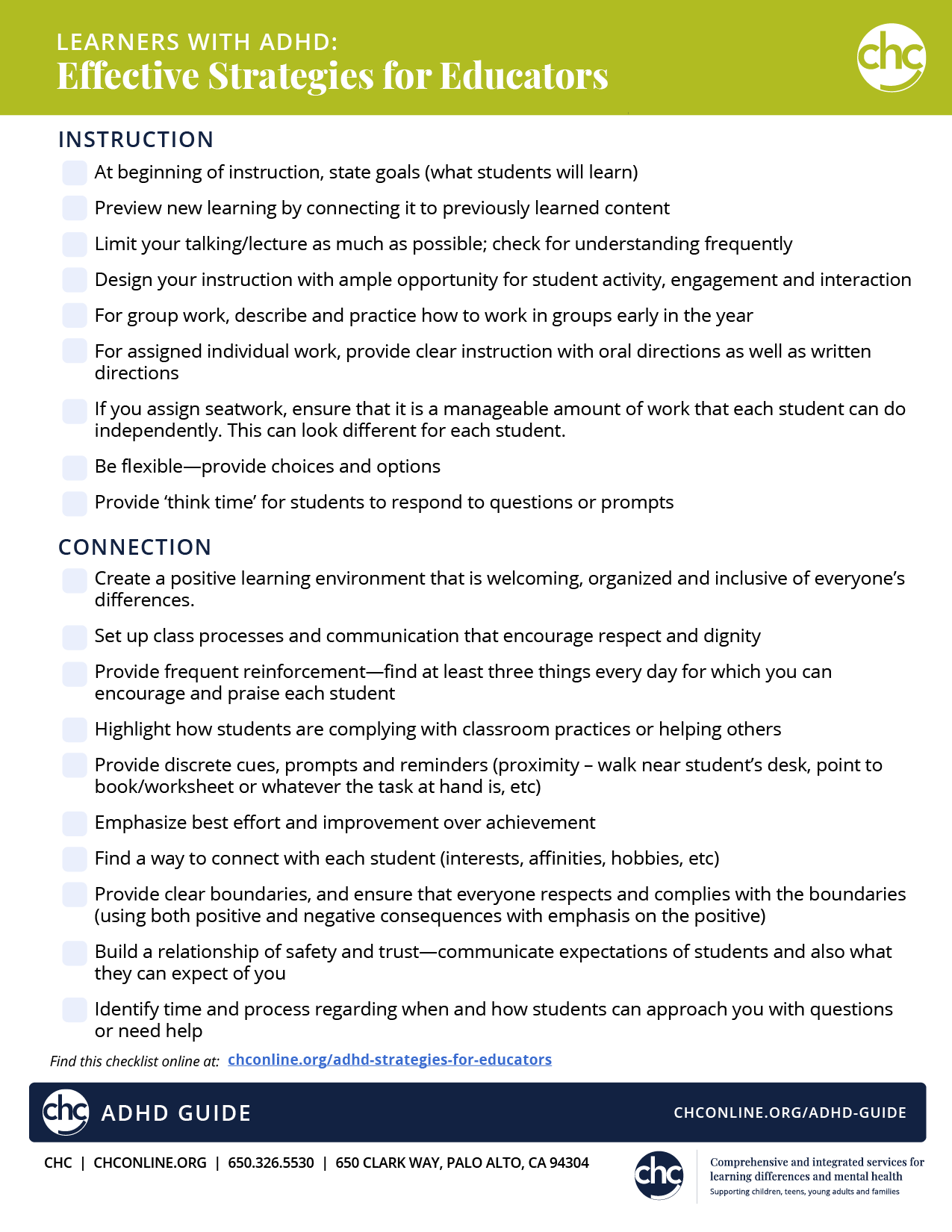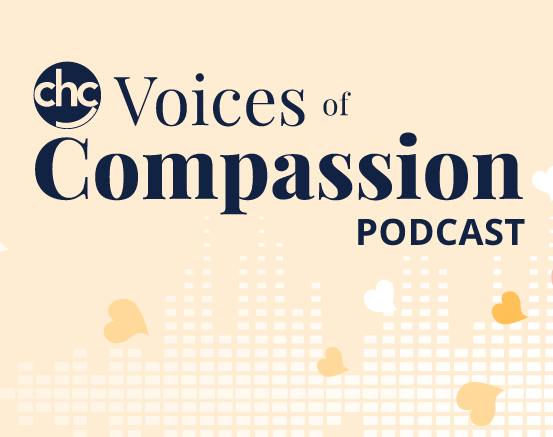Building a learning environment structured to support learners with ADHD can help boost student confidence and academic achievement.
It’s likely that you have one or more students with ADHD in your class. Students with ADHD can have more difficulty compared to their peers in paying attention, sitting for any period of time, daydreaming, organizing and more.
It’s not possible for these students to simply “try harder” to focus — it doesn’t work that way. In addition, many people with ADHD are creative, innovative, persistent and inventive.
This tool is part of CHC’s ADHD Guide.
Download the Learners with ADHD: Effective Strategies for Educators checklist.
- As you read through the checklist, mark the items that you are currently practicing in your class or instruction.
- When you’ve finished, review the list and reflect on any boxes you didn’t check. Identify 1 or 2 of these items that you can start to implement in your class or instruction and make an action plan to do that.
- If you checked all the boxes, you might think about refining or practicing a couple of items more consistently. Make an action plan to do that.
Learners with ADHD: Effective Strategies for Educators
|
Class Environment |
| • |
Explain and practice class routines (such as how to enter the room in the morning or after a break, how and when to ask for a break or use the restroom, how to organize student space/desk, how to use a planner/organizer, etc.) |
| • |
Keep a daily schedule up where it is easy to see and update it each day |
| • |
Review the day’s schedule at the start of each day and periodically throughout the day |
| • |
Develop a plan for how you want students to transition between activities and practice it regularly |
| • |
For students with ADHD, create a checklist of how to get started |
| • |
Because students with ADHD can be distracted with sights, sounds, and movement in the environment, keep the classroom clean, organized and free from distracting visuals |
| • |
Allow students who need it movement breaks and fidgets, or conduct a break (3-4 min) for the entire class with ‘freeze dance’ or chair aerobics or running/jumping in place |
|
Instruction |
| • |
At beginning of instruction, state goals (what students will learn) |
| • |
Preview new learning by connecting it to previously learned content |
| • |
Limit your talking/lecture as much as possible; check for understanding frequently |
| • |
Design your instruction with ample opportunity for student activity, engagement and interaction |
| • |
For group work, describe and practice how to work in groups early in the year |
| • |
For assigned individual work, provide clear instruction with oral directions as well as written directions |
| • |
If you assign seatwork, ensure that it is a manageable amount of work that each student can do independently. This can look different for each student. |
| • |
Be flexible—provide choices and options |
|
Connection |
| • |
Create a positive learning environment that is welcoming, organized and inclusive of everyone’s differences. |
| • |
Set up class processes and communication that encourage respect and dignity |
| • |
Provide frequent reinforcement—find at least three things every day for which you can encourage and praise each student |
| • |
Highlight how students are complying with classroom practices or helping others |
| • |
Provide discrete cues, prompts and reminders (proximity – walk near student’s desk, point to book/worksheet or whatever the task at hand is etc.) |
| • |
Emphasize best effort and improvement over achievement |
| • |
Find a way to connect with each student (interests, affinities, hobbies, etc.) |
| • |
Provide clear boundaries, and ensure that everyone respects and complies with the boundaries (using both positive and negative consequences with emphasis on the positive) |
| • |
Build a relationship of safety and trust—communicate expectations of students and also what they can expect of you |
| • |
Identify time and process regarding when and how students can approach you with questions or need help |
|
|
Download Learners with ADHD: Effective Strategies for Educators to complete offline.
Check out CHC’s ADHD Guide for more helpful resources.
This resource is filed under:













